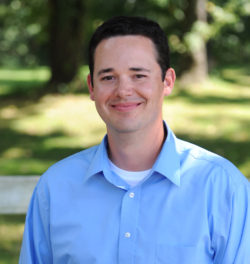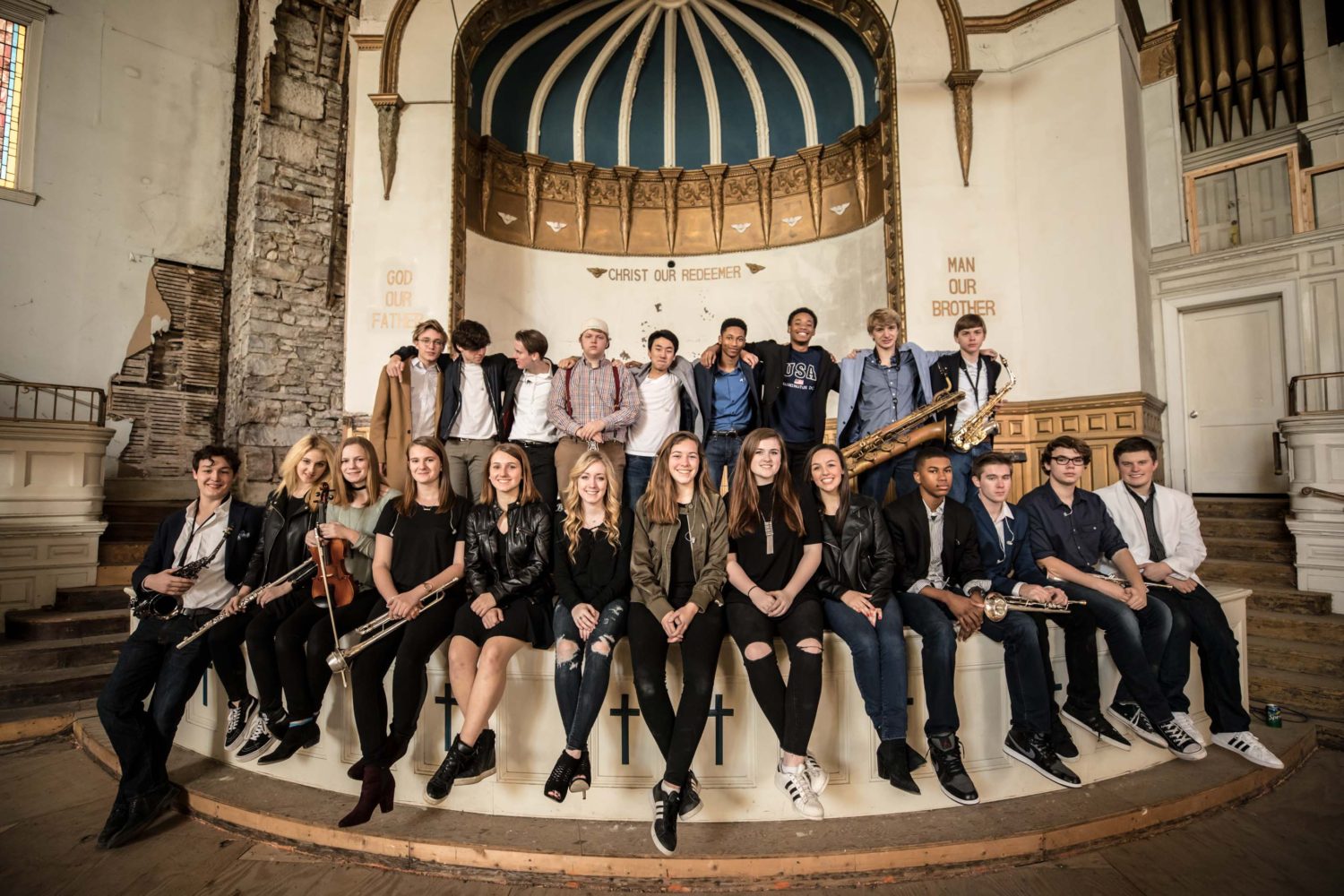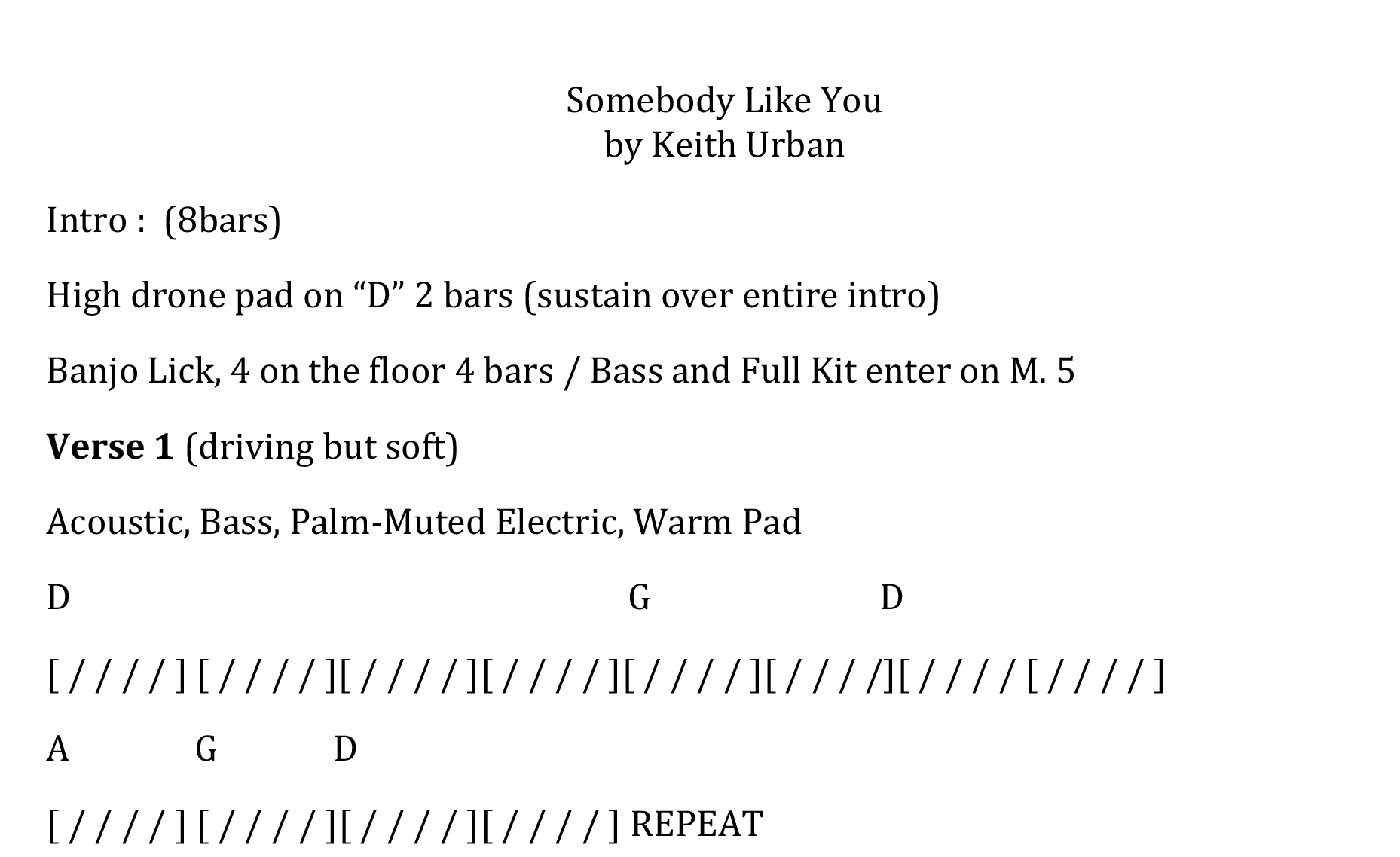
Reprinted with permission from NAfME and the Illinois Music Educator Journal; additional edits and video added by the author.
Commercial Music Education has revolutionized our program (at Briarcrest Christian School) and has allowed our students to experience higher levels of musical excellence than ever before. Seven years ago I created a commercial music ensemble at Briarcrest that focused on singing and playing all styles of popular music including Jazz, Rock, Country, Blues etc… This ensemble became known as SoundScape. SoundScape quickly became one of the premier performance groups at Briarcrest and has been recognized both regionally and nationally for its outstanding level of musical performance and studio recordings. By creating a rigorous and educationally sound curriculum that focuses on ear training, reading proficiency, music theory, improvisation, ensemble playing techniques and exposure to recording technology, we have been able to pull students into our program who would have never considered a traditional high school music ensemble. This approach to music education requires students to exist on what Bloom’s Taxonomy refers to as the “creative” level of learning, utilizing advanced aural and cognitive skills in a demanding and holistic way on a daily basis. Commercial music education has quite literally enhanced every facet of our program from marching band to our symphonic wind ensemble and has provided our students with greater opportunities in music.

How commercial music saved our program… When I joined the faculty at Briarcrest Christian School eight years ago, I inherited a band program that was struggling to stay afloat. In fact, enrollment in our program had hit an all-time low with less than 4% of our school participating in our high school instrumental music program. My first task was to diagnose the problem and find a solution, fast! That’s when I stumbled upon a YouTube video of one of our non-band students playing guitar at the legendary B.B. Kings Blues Club on Beale Street. I was blown away by this kid’s musical ability. I asked myself, “why isn’t he in band”? The answer was more than obvious; our program did not entice him. That video made me realize that we were losing out on an opportunity to involve musically inspired kids because our curriculum was limited to traditional instrumental ensembles. This caused me to consider a radical new approach to high school music education. A paradigm shift was on the horizon.
Before I proceed, I want to preface this section by saying that the foundation of our program is still our traditional ensembles. Our marching and concert bands remain the cornerstone of our program and are where most of our students find their musical identity. Commercial music has not replaced these core ensembles; on the contrary, it has saved, enhanced and strengthened them.

The Paradigm Shift… I took that guitar student, along with several others that I had recruited and formed our program’s very first commercial music ensemble. This group, which would eventually be known as “SoundScape”, included a drummer, singers, guitarists, a keyboardist, and a horn section. These kids learned and performed music that was indigenous to our school’s culture. This included Rock, Blues, R & B, Soul, and Jazz. What started as a desperate search for something to save our program turned into, I believe, a more comprehensive, holistic and effective approach to music education.

Why commercial music? For us, commercial music was indigenous to our school’s culture and, therefore, took off in a way that our more traditional ensembles did not. What worked well 25 years ago was actually holding us back. Why? The culture of our school changed while our department did not. We needed to offer something that every kid could relate to, be inspired by and get excited about. Once we adopted this new approach and began incorporating commercial music into our program, we saw immediate and consistent growth (see the enrollment chart below). Commercial music was indigenous to our school’s culture and has taken off like wildfire! Now, instead of trying to convince kids to join band, we have students transferring to our school just to be a part of our program. One particular student drives over one hour each way just to be here.
The most important reason for commercial music is that it provides our students with an all-encompassing and holistic approach to music education. When I began developing our curriculum, I quickly realized that the techniques involved in teaching this style address every aspect of the National Standards for Music Education. In fact, techniques such as ear training, composition, orchestration, improvisation, musical analysis, and the world or recording technology are naturally woven into commercial music education pedagogy. Very few times, if ever, do my traditional ensembles spend time composing, orchestrating parts, playing by ear, analyzing the harmonic structure and form of a piece, or recording in a studio.
In Part 2 of this blog, I will go into specific pedagogical approaches and techniques that I use to teach our students. This is perhaps the most compelling section because it explains how to use music theory, ensemble techniques, recording technology and other methods to enhance students’ musical education. Below are a few links that show what this style of music education looks and sounds like.
Video Examples
Audio Recordings
https://soundcloud.com/briarcrestsoundscape-535659835
https://itunes.apple.com/us/album/man-in-the-glass/id653166304
https://itunes.apple.com/us/album/equilibrium/id953373418
https://itunes.apple.com/us/album/illumination/id981294145
https://open.spotify.com/artist/1EIuEfJmTHaNVo5PyV4LJ4
How to teach and implement commercial music into your program
In the Classroom
Song selection… When I talk with educators about implementing commercial music into their program, the first question I am often asked is “where do you find music”. My response is often met with a puzzled look when I tell them, “my students”. Unlike my traditional ensembles where the music is chosen by me, the magic of our commercial music program is that the students have creative investment in the repertoire. Here’s how we do it…
Step one – I have my students submit song suggestions on a Collaborative Spotify playlist that we all share and are able to access. This is a FREE resource that does not require a subscription. Once my students have posted their suggestions, I then listen through all of the songs and choose the ones that are…
- Accessible to our group
- Lyrically appropriate
- Fit into the performance that we’re putting together
I allow my students to have creative investment by suggesting the material. My job is to guide them through that process and to then make the final decision of what we will perform. This is a great way of getting kids to take ownership over what they’re learning. Once the set list has been decided, I then create a performance playlist from which they write out their parts.
Sheet Music… The second question that I’m often asked is, “where do you find sheet music for your group”? The answer may seem counterintuitive, but it’s the same as before… “My students”. All of my students learn how to read standard notation. I believe that reading is important for any musical education. However, developing great aural skills along with understanding music theory is also essential. Popular music is an incredible medium for developing aural skills which reinforce the students’ reading abilities. Instead of purchasing parts (or transcribe them myself), I teach my students how to learn their parts by ear and then notate them using a FREE notation software called Muse Score. Often times, my horn section will pick out their part at the piano and then have to transpose it for trumpet or sax. Listening critically for their part in a particular song, learning the part by ear, and finally notating that part (often times having to transpose) is a musically holistic experience for the student. I take the same approach with my vocalists when learning harmony parts. These students learn to identify pitch intervals and can create harmonies based on the melody and chord progression.
I take a slightly different approach with our Rhythm Section when it comes to notating parts. Instead of using standard notation, I have them analyze both the Harmonic and the Formal structure of every song that we learn and create what we call “charts”. This requires the students to use their understanding of written theory along with their aural skills to give themselves enough information to recreate their own unique parts for a song. This is an example of one of the “Charts” that my students wrote for a song that we are currently working on…

In Performance
Commercial Music Education opens up a wide range of performance possibilities for students, ranging from school concerts to touring opportunities. My group (known as SoundScape) performs at our school, at other school’s around the Memphis area, at regional music festivals, county fairs, and takes a week-long performance tour across the Gulf Coast. These performances provide our students with one of the most positive musical experiences imaginable. This style of music generates a strong response from the audience, which is a huge positive reinforcement for our students. After a great performance where the crowd is dancing, singing along and even creating a mosh-pit, our students are often met by enthusiastic fans begging them to sign autographs! This “rock-star” experience does more than boost the students’ egos; for some, it provides a sense of self-confidence. Some of the proudest moments of my career have been to see very shy and introverted kids break out of their shell after one of these performances. I have witnessed lives literally change before my eyes. This is a dream come true for a lot of kids and is certainly an experience that few are ever afforded.

Song Writing/ Recording / Music Videos
Another unique aspect of commercial music education is the area of song writing and recording technology. By empowering the students to take ownership over their music with song selection, learning parts by ear and then notating them, song-writing is a natural progression in the curriculum. I often have my students start with “stream of thought” writing, where they will write literally anything that pops into their head. We eventually whittle their random thoughts down to a specific concept or lyrical “hook” and go from there. Here are a few examples of songs that my students have written…
soundcloud.com/briarcrestsoundscape-535659835/sets/illumination
Recording can be as simple or as complex as you choose, but it is probably the most valuable and educationally fruitful thing that we do. I learned a long time ago that the recording studio is not a glamorous place. Recording can be an incredibly humbling experience because recordings do not lie. If your horns are out of tune, it’s obvious. If your vocalists are pitchy, there’s no hiding it. Or if your drummer can’t play in time with a metronome, you simply can’t do anything. Such a brutally honest environment, which at times can be intimidating, can be the most beneficial thing for young musicians. SoundScape records professionally produced albums annually. This type of production is a 9-month project that consumes hundreds of after-school hours. I am convinced that, while a professional production may not be for everyone, even a simple recording project done on a laptop using free software (such as “garage band”) can still be incredibly beneficial for students. Recordings provide true feedback for the musicians and allows them to improve with each listen.
Music videos provide another opportunity to teach and inspire students. I teach my students that their number one job as performers is to communicate to their audience. Often times, high school students can appear insecure on stage, despite being highly skilled musicians. In an effort to help teach my students how to better communicate what a song is trying to convey, I decided to produce two music videos with them this year (2017). These projects proved to be an incredibly effective way of teaching them how to communicate visually to their audience. An upbeat tune such as “Feeling Good” shouldn’t be performed with a stoic posture. Instead, the students have to learn how to visually communicate the message of the song which is one of joy and freedom. Once we started filming, the students were able to see how their body language either helped or hindered the message of the song. Without much instruction, the students almost intuitively understood what to do. Here’s a link to that video…
Songwriting, studio recordings, and music videos all serve the purpose of teaching and inspiring music students on multiple fronts. These activities reveal areas of strength and weakness in the students’ abilities and allows them a unique perspective in which to become better skilled musicians. In addition, they allow greater opportunities for the students to express their individual creativity.
Copyright, Licensing, and Distribution
The area of copyright law and intellectual property is an important issue to be aware of; and at the same time, it can provide another unique approach to music education. Copyright issues generally arise when an individual or group begins selling a product such as a recording, video performance, or notated sheet music. Any time my group records a “cover-tune”, we purchase what is known as a mechanical license. This grants us permission to record, distribute and sell a specific number of units. A great resource for securing these licenses is harryfox.com. It’s simple, inexpensive, and most importantly… legal. There are other companies that provide these same licenses and will also distribute recorded material to various online sources such as iTunes, Spotify or Pandora. We use a company known as Soundrop for licensing and digital distribution of our recordings. Another company that does the same thing is TuneCore.com.
This is a great opportunity to teach students how to copyright their own original material. Students who write original songs for our albums are required to have their songs copyrighted before we release the recordings. This teaches them the value of their work, the importance of protecting their intellectual property, and ensures that they are themselves protected in the event that someone wants to use their songs. I see this as another great way of teaching various facets of the music industry that may spark a student’s interest. I have had several students graduate from our program and go on to persue degrees in music business because of the lessons that they learned from our program.

For more information, please contact me directly at mlparsons@briarcrest.com or follow me on Facebook at www.facebook.com/michael.lee.parsons
Michael Parsons, serves as the Director of Instrumental Music at Briarcrest Christian School. Michael directs the Briarcrest Symphonic Band and Wind Ensemble, the “Mighty Sound of the Saints” Marching Band, Middle and High School Worship Bands, and two of Briarcrest’s premier commercial music ensembles, “SoundScape” and “76-South”. Michael holds a Master’s of Music Degree in orchestral conducting along with a Bachelor’s of Music Degree in performance, both from the University of Memphis. In addition to being an educator, Michael has had a very active career performing with artists such as Keith Urban, Booker T and the M.G’s, and with the national/ international touring band, Sound Fuzion. Most recently, Michael has been nominated for the 2017 Grammy Music Educator Award.














